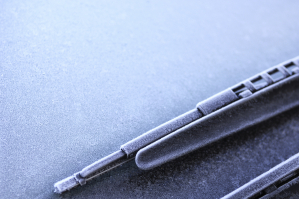Use this checklist to avoid getting left out in the cold.
Don’t make winter any harder than it has to be – on yourself or your vehicle. To keep your car running reliably this winter, spend a little time on preventive maintenance before that chill in the air turns into a polar vortex.
Here’s a checklist of 10 important maintenance items to take care of now, so your vehicle can take care of you later. While you may be familiar with several, there may be some surprises on the list.
- Radiator cap– while it’s a simple and inexpensive part, theradiator cap plays a critically important role in your heating and cooling system – not the least of which is keeping the antifreeze in your vehicle, where it should be. A leaking radiator cap can cause the engine to overheat and allow antifreeze to leak, neither of which are good scenarios for winter-weather driving. Take a close look around the radiator cap for signs of leaking fluid. To be on the safe side, if the vehicle radiator cap is several years old, replace it with a new one. The five or six bucks you may invest are well worth the peace of mind and performance you get in return.
- Thermostat– another inexpensive, yet critically important component of your vehicle heating and cooling system is the thermostat. If it’s not functioning properly, you might find yourself without heat. That’s because thermostats can fail, particularly if the coolant hasn’t been changed regularly and corrosion has appeared. Change the thermostat, and change your odds having a warm interior all winter long.
- Undercar– your vehicle ground clearance could decrease this winter, but only because the road surface might be rising up to meet you in the form of snow drifts or boulder-like chunks of snow and ice. Take a quick look under your car and search for any loose plastic panels related to aerodynamics that might have come loose and are dangling, as well as any exhaust system parts that look like they’re hanging particularly low.
- Tire Pressure – temperatures aren’t the only thing going down in winter. For every 10-degree drop in air pressure, it’s estimated that tire pressure decreases by one pound. In a tire that’s only supposed to hold 35 pounds of pressure, colder temperatures can translate to a significant tire-pressure deficit. Underinflated tires wear faster, hurt fuel economy, and can reduce handling and traction..
- Headlights– even if they haven’t burned out, it may be time to replace them. Did you know that headlight bulbs dim over time? Couple that with the haze that may have developed on your plastic headlight covers and you could be driving with significantly less light, and reduced down road vision. Change your headlights or restore them.
- Oil– if you’re not using synthetic oil, consider switching. It flows more freely at lower temperatures, making for easier starts and less engine wear.
- Tire Tread Depth– tires that are showing their age with the telltale sign of little to no remaining tread depth aren’t a good way to head into winter. Tires are your first line of defense when it comes to gaining traction in snow and ice, and worn tires make that job harder..
- Windshield deicer– decrease the amount of time you’re out in the cold, trying to scrape your windshield, and increase your visibility with wind shield deicer. To see clearly, you need an ice-free windshield, and this is the quickest way to get it.
- Antifreeze– not only will it help prevent heating and cooling system corrosion in every season, antifreeze also protects your engine in frigid temperatures, if it’s at the proper level and strength. And that’s not all. Having the proper level of antifreeze is a must have if you want the level of heat you’ve come to expect.
- Emergency Kit– even a new or well-maintained vehicle can experience trouble, and if it does let you down, you should be prepared with an emergency kitto help see you through in case you’re stranded for a few minutes or even a few hours.
As an experienced driver and quite possibly someone who’s pretty seasoned at working on their own vehicle, you’re probably already familiar with the usual suspects that can cause winter driving problems. Even so, it doesn’t hurt for a quick review of your battery and windshield fluid as the final step in your winter driving preparation checklist.
Chances are, you and your vehicle will get through winter just fine. All it takes is a little time and commitment in the garage now, instead of wishing you had later on.
Resource: Editor’s note: Drive safe and warm this winter with parts and accessories from Advance Auto Parts. Buy online, pick up in store, in 30 minutes.








Leave A Comment